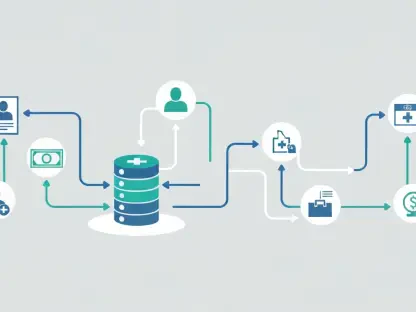In an era where innovation is the cornerstone of progress, the divide between academic research and industrial application has persistently stifled groundbreaking ideas from reaching the market, leaving untapped potential on the table. Universities, despite being hubs of cutting-edge research, often grapple with fragmented communication, bureaucratic delays, and misaligned objectives when partnering with industry players. This gap has historically slowed the commercialization of vital discoveries. However, a transformative solution has emerged through AI-driven platforms that are redefining university-industry collaboration (UIC). By leveraging advanced technology, these platforms streamline processes, foster dynamic partnerships, and accelerate the journey from lab to real-world impact. With a focus on tools like ForagerOne, this exploration uncovers how such innovations are reshaping the ecosystem of collaboration, driving economic growth, and opening new avenues for investment in education technology.
Breaking Down Barriers with Cutting-Edge Technology
The longstanding challenges in university-industry partnerships have often stemmed from systemic inefficiencies that hinder the translation of research into practical solutions. Bureaucratic obstacles, differing priorities between academia’s focus on discovery and industry’s drive for profit, and poor communication channels have all played a role in delaying progress. AI-driven platforms address these issues with precision, utilizing machine learning algorithms to pair researchers with industry counterparts based on complementary expertise and shared objectives. This intelligent matchmaking fosters interdisciplinary teams that are equipped to tackle real-world challenges from the very beginning. By reducing friction in the collaboration process, these platforms ensure that innovative ideas don’t languish in academic silos but instead find swift pathways to application, fundamentally altering how partnerships are formed and sustained.
Another critical aspect of these technological solutions lies in their ability to dismantle historical divides through automation and enhanced connectivity. Unlike traditional methods that rely on manual networking or chance encounters, AI platforms centralize and optimize the collaboration process. They create virtual spaces where researchers and industry leaders can seamlessly exchange ideas, share resources, and align on goals without the delays often associated with conventional approaches. This shift not only speeds up the timeline from concept to commercialization but also builds trust among stakeholders by ensuring transparency and accountability. As a result, universities are no longer seen merely as knowledge repositories but as active contributors to solving pressing global problems through strategic alliances with the private sector.
Harnessing Data for Strategic Advantage
One of the most compelling features of AI-driven collaboration platforms is their use of data analytics to inform decision-making within academic institutions. Tools such as ForagerOne provide administrators with deep insights into research trends, identifying areas of opportunity and gaps in collaboration that might otherwise go unnoticed. Whether it’s pinpointing a surge in demand for AI applications in healthcare or recognizing potential in sustainable energy solutions, these platforms enable universities to allocate resources with precision. This data-driven approach ensures that institutions remain agile in a competitive environment where the ability to pivot quickly to high-impact areas can make all the difference in securing funding and partnerships.
Beyond resource allocation, the strategic value of analytics extends to enhancing the overall efficiency of research initiatives. By analyzing patterns in collaboration outcomes, these platforms help universities understand which partnerships yield the highest returns and why. This empowers academic leaders to refine their strategies, focusing on projects with the greatest potential for real-world application and economic impact. Additionally, the ability to track emerging fields in real time allows institutions to position themselves as frontrunners in innovation, attracting industry interest and investment. In a landscape where speed and relevance are paramount, such tools provide a competitive edge, ensuring that research efforts are not just theoretical exercises but stepping stones to tangible advancements.
Fostering Collaboration Through Shared Goals
A key pillar of successful university-industry partnerships is the alignment of core principles such as clear communication, mutual objectives, and a culture of entrepreneurship. AI-driven platforms are uniquely positioned to reinforce these elements by creating structured environments where collaboration thrives. By centralizing interactions and using intelligent systems to ensure that partners are matched based on compatible aims, these tools eliminate much of the guesswork that often derails joint efforts. The result is a more cohesive process where both parties understand their roles and work toward common endpoints, whether that’s developing a new technology or launching a startup.
Moreover, these platforms actively support pathways to commercialization, such as intellectual property disclosure and incubation of new ventures. This focus transforms universities from passive research entities into dynamic engines of economic growth. By embedding an entrepreneurial mindset into the collaboration framework, AI tools encourage academics to think beyond publication and toward market-ready solutions. This shift not only benefits industry partners seeking innovative products but also enhances the reputation of universities as vital players in the innovation economy. The emphasis on actionable outcomes ensures that research has a direct impact, bridging the gap between theoretical knowledge and practical utility in a meaningful way.
Seizing Opportunities in a Growing Market
From an investment perspective, AI-driven UIC platforms are carving out a significant niche within the burgeoning education technology sector. With edtech demonstrating robust growth and outpacing broader market benchmarks, these tools are drawing attention from institutional investors looking for high-potential opportunities. Platforms like ForagerOne, with their cost-effective licensing models, offer a compelling value proposition by reducing administrative overheads while maximizing the returns on research investments. This financial efficiency, coupled with the growing demand for research-to-market connectivity, positions such platforms as strategic assets in an industry poised for continued expansion over the coming years.
Additionally, the scalability of these platforms adds to their allure for investors. As more universities adopt AI tools to enhance their collaboration efforts, the network effect amplifies the value of each platform. A wider user base means richer data insights, more diverse partnerships, and ultimately, greater innovation output. This creates a virtuous cycle where growth fuels further investment, driving advancements in both technology and market reach. For stakeholders in the edtech space, backing these platforms represents not just a financial play but a chance to shape the future of how knowledge translates into economic and societal benefits, marking a pivotal shift in the investment landscape.
Balancing Potential with Practical Challenges
While the promise of AI-driven collaboration platforms is undeniable, the path forward is not without obstacles that require careful navigation. Investor enthusiasm is often tempered by concerns over the reliance on constrained university budgets, which can limit widespread adoption. Furthermore, the relatively early stage of AI integration into academic processes raises questions about long-term scalability and effectiveness. However, solutions like ForagerOne are addressing these challenges head-on by prioritizing cost efficiency and exploring partnerships with private-sector entities to diversify funding sources, thereby reducing dependency on institutional finances.
Equally important is the need to monitor external factors that could impact the growth of these platforms. Shifts in federal funding for education and research, as well as varying rates of technology adoption across institutions, pose potential risks that stakeholders must account for. Despite these hurdles, the adaptability of AI tools offers a buffer, allowing them to evolve in response to changing conditions. For instance, expanding into new markets or tailoring features to meet specific institutional needs demonstrates a flexibility that mitigates some of the inherent uncertainties. This balanced view underscores the dual nature of innovation—brimming with opportunity yet demanding strategic foresight to overcome practical limitations.
Paving the Way for Future Innovation
Reflecting on the journey of university-industry collaboration, it’s evident that AI-driven platforms have played a crucial role in overcoming entrenched barriers that once hindered progress. Their ability to streamline partnerships, harness data for strategic gains, and align academic and industrial goals has reshaped how innovation is cultivated and brought to market. Looking ahead, the focus for stakeholders shifts toward scaling these solutions to reach more institutions while addressing fiscal and technological challenges. A priority emerges in fostering broader adoption through policy support and private investment, ensuring that the benefits of such tools extend to diverse academic landscapes. As the edtech sector continues to evolve, the emphasis remains on refining these platforms to anticipate future needs, solidifying their place as indispensable bridges between research and real-world impact.









